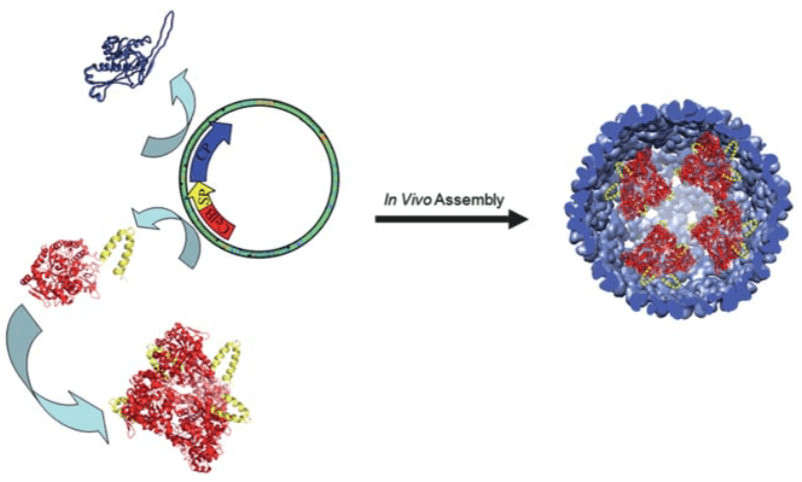Mempro™ Rhodopsin Production Using Virus-Like Particles System
Creative Biostructure can offer advanced custom Mempro™ rhodopsin-like receptors and pumps production services in virus-like particles system. You can count on us all through your projects.
Virus-like particles (VLPs) can simulate the native virus, but are non-infectious owing to they do not have any viral genetic materials. VLPs are self-assembly multiprotein structures (Figure 1), which are widely used in the field of vaccinology. VLPs derived from the Hepatitis B virus and composed of the small HBV derived surface antigen (HBsAg). Up to now, VLPs have been generated from components of a wide variety of virus families including bacteriophages (e.g. Qβ, AP205), Flaviviridae (e.g. Hepatitis C virus), Retroviridae (e.g. HIV), and Parvoviridae (e.g. adeno-associated virus). Recently, virus-like particles carrying conformationally-complex membrane proteins (termed lipoparticles) have been applied for integral membrane protein production. Lipoparticles can incorporate a wide range of structurally intact membrane proteins, including G protein-coupled receptors (GPCRs), ion channels, and viral Envelopes. Rhodopsin-like receptors and pumps are a family of GPCRs, which possess seven alpha-helix transmembrane domains.
 Figure 1. Virus-like particles packaging assembly. (Soft Matter, 2012)
Figure 1. Virus-like particles packaging assembly. (Soft Matter, 2012)
Virus-like particles can be performed for a wide variety of applications, including:
- Antibody screening;
- Phage and yeast display;
- Immunogens/vaccines production;
- Ligand binding assays;
- Nucleic acids and small molecules delivery.
- Other potential applications
Creative Biostructure provides high-yield rhodopsin-like receptors and pumps in the stable, highly purified and native-conformation state. Lipoparticles can be produced from bacterial cells, yeast cells, insect cells, plant cells and mammalian cells for rhodopsin-like receptors and pumps production. Well-characterized commercial Escherichia coli (E. coli) strains and insect cells are the most widely used systems for VLPs production. Mammalian cells are also widely used for VLPs production with the target to construct vaccine candidates and gene therapy agents. For instance, we can obtain lipoparticles from mammalian cells by co-expressing the retroviral structural core polyprotein, Gag, along with a desired membrane protein. Gag core proteins self-assemble at the plasma membrane, where they bud off and capture target membrane proteins. Since the rhodopsin-like receptors and pumps within lipoparticles are derived directly from the cell surface without mechanical disruption or detergents, the native structure and orientation of rhodopsin are retained.
Creative Biostructure provides other various Mempro™ membrane protein production services. Please feel free to contact us for a detailed quote.
References:
A. Roldão, et al. (2010). Virus-like particles in vaccine development. Expert Rev. Vaccines, 9(10): 1149-1176.
D. P. Patterson, et al. (2012). Virus-like particle nanoreactors: programmed encapsulation of the thermostable CelB glycosidase inside the P22 capsid. Soft Matter, 8: 10158-10166.
S. Willis, et al. (2008). Virus-like particles as quantitative probes of membrane protein interactions. Biochemistry, 47(27): 6988-6890.
Virus-like particles. (https://en.wikipedia.org/wiki/Virus-like_particle#Assembly_of_VLPs).